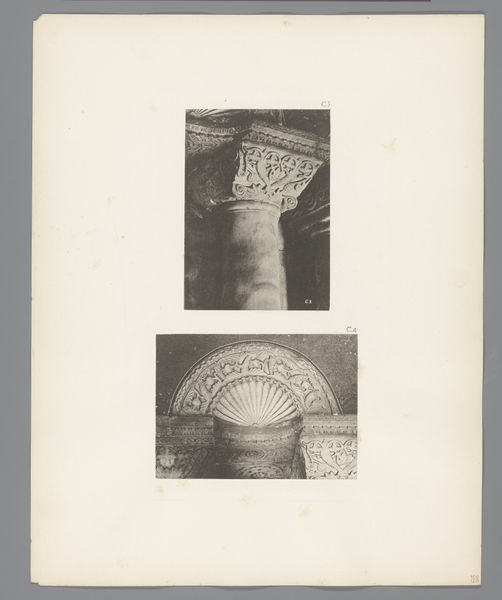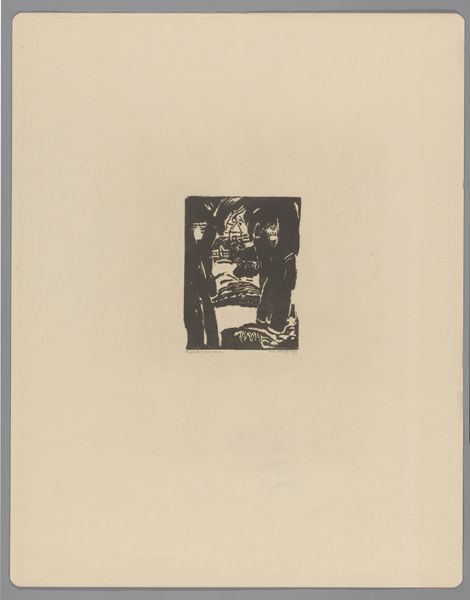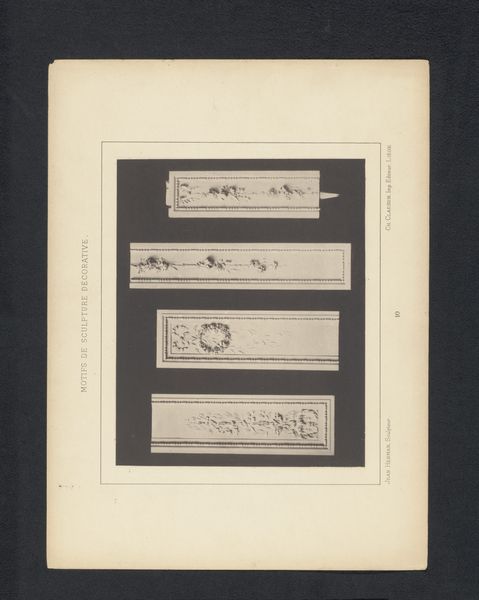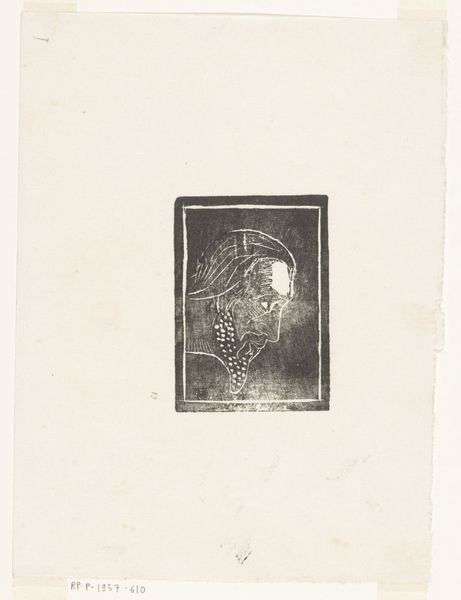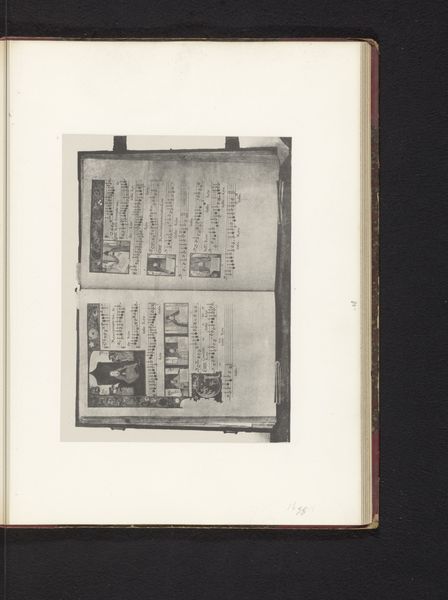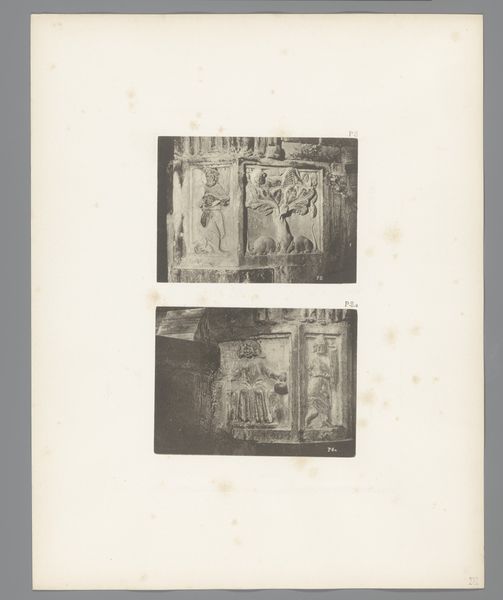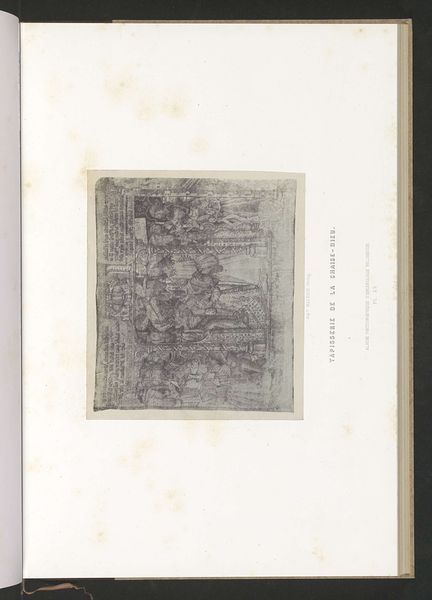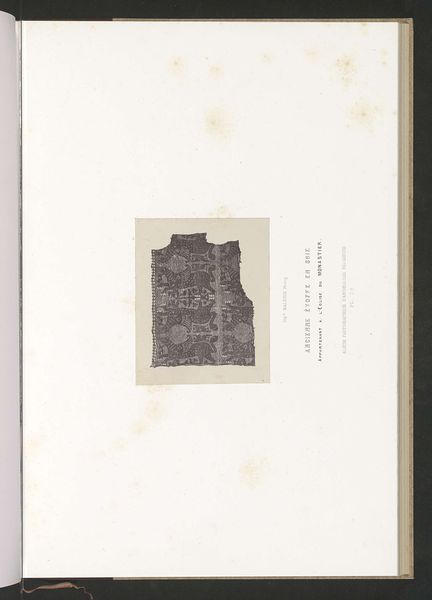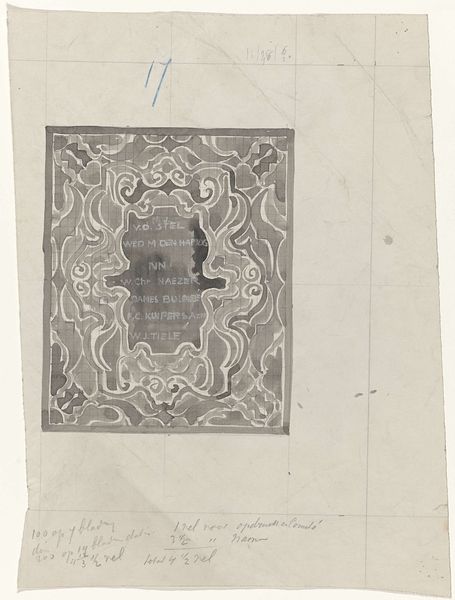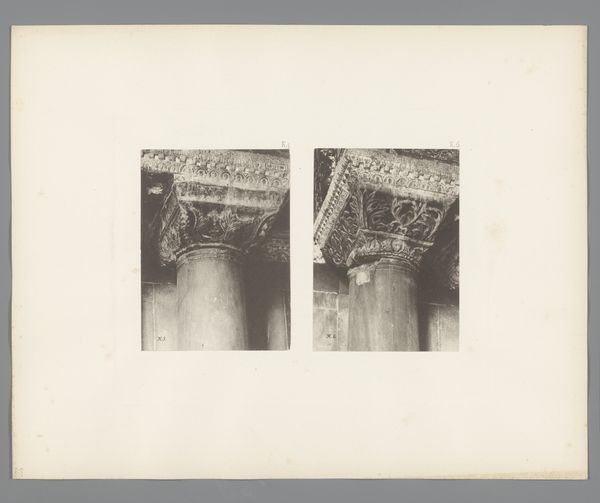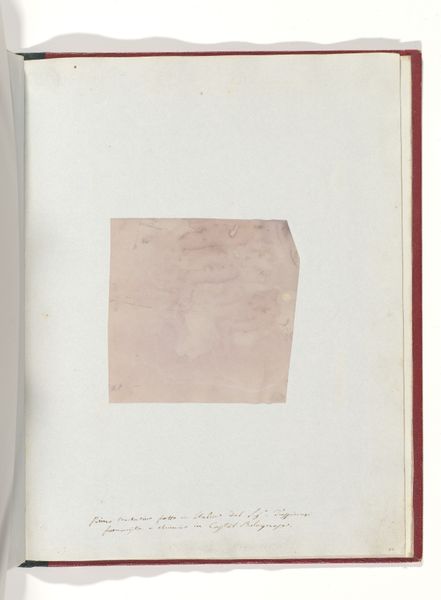
Korinthische zuil en een inscriptie van de San Marco in Venetië before 1885
0:00
0:00
print, paper, engraving, architecture
# print
#
classical-realism
#
paper
#
ancient-mediterranean
#
engraving
#
architecture
Dimensions: height 393 mm, width 310 mm
Copyright: Rijks Museum: Open Domain
Curator: This engraving by Carl Heinrich Jacobi, titled "Korinthische zuil en een inscriptie van de San Marco in Venetië," created before 1885, offers a fascinating glimpse into architectural detail. Editor: It hits me with such solemnity, a ghost of empire staring back. The textures, like dried creek beds etched into stone. It feels ancient, and heavy. Curator: The engraving showcases a Corinthian column, a symbol of ancient classical architecture. When situating it within Venetian history, one could analyze how such elements signified a revival of imperial power and aesthetic grandeur for its patrons. How might this have affected Venetian society, and did it contribute to any contemporary theories or socio-political tensions? Editor: Good point. And maybe the artist was thinking about ruin and decay – even architectural supremacy crumbles, eh? I imagine sketching it, feeling the cool stone dust, wondering about the hands that built it. What did their lunch breaks look like? Were they unionized? Sorry, my mind wanders! Curator: Well, it's important to address labor and class. Considering that Venice at the time was a place with vast class disparities, a pillar like this may suggest that some had easier lunches than others. Editor: True, and maybe I am being blinded by how pretty the architecture is. What kind of person immortalizes that column but overlooks all of the city's real social ills? Food for thought. Curator: Indeed. Perhaps this print encourages us to consider that the physical artifacts around us carry legacies of privilege and exclusion, thus begging questions of whose histories get memorialized and why. Editor: It definitely gave me a lot to ponder! Something seemingly frozen in time keeps shapeshifting. Curator: I appreciate how our discussion has connected history with modern theoretical questions regarding class, labor, and visual memory. Thank you!
Comments
No comments
Be the first to comment and join the conversation on the ultimate creative platform.
